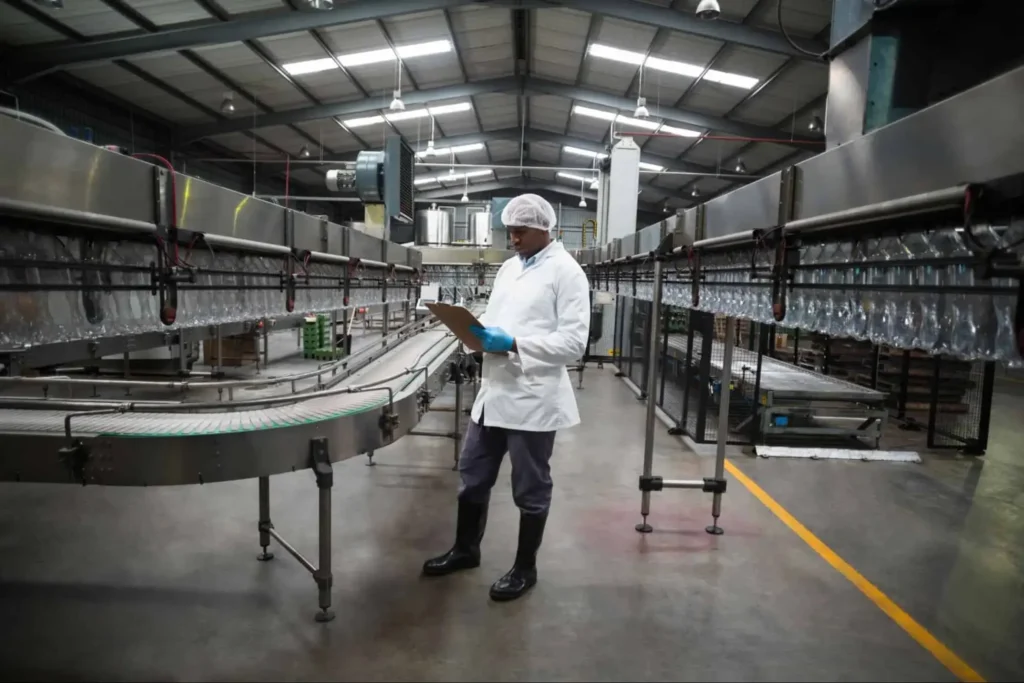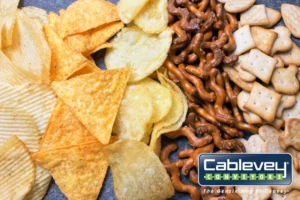In the realm of frozen food processing, ensuring the utmost hygiene is paramount. As consumer demands for safety and quality surge, hygienic conveyance for frozen food processing becomes more critical than ever. Maintaining impeccable hygiene not only preserves the integrity of the frozen goods but also prevents foreign matter intrusion, crucial for product safety. Additionally, with the right automated conveyor systems, microbial growth is deterred, guaranteeing that the frozen foods remain uncontaminated and fit for consumption.
Driving Factors and Quality Assurance in the Global Frozen Food Market
According to a recent study by Grand View Research, Inc., the worldwide frozen food market is poised to hit $380.5 billion by 2027, with a CAGR of 3.4%. Factors such as convenience, consistent availability, extended shelf life, and health benefits on par with fresh produce are driving this growth.
Yet, ensuring the safety and integrity of frozen foods is a nuanced endeavor encompassing the entire cold chain—from pre-treatment and processing to packaging, storage, transportation, and eventual defrosting. At each stage in the frozen food journey, it’s critical to uphold stringent hygiene standards, safeguard against external contaminants, and ward off potential microbial threats.
Re-Evaluating the Use of Particular Industrial Conveyor Systems
Numerous processors are re-evaluating traditional “open” automated conveyor systems like bucket elevators and flat-belt conveyors, leaning towards closed systems that minimize exposure to external conditions and potential contaminants.
Furthermore, with frozen food processors aiming to boost operational hours and cut down on demanding maintenance tasks, the simplicity of cleaning this machinery becomes a crucial factor. Even though the frozen food sector upholds some of the strictest food safety benchmarks nationally, many manufacturers often overlook the importance of the conveyor systems that move frozen items within their plants.
Such systems should not just comply with the safety and quality norms associated with other freezing and packaging tools but also optimize transfer rates to swiftly move products and avoid any undesired defrosting.
Enclosed Conveying Systems Guarantee Protection Against Contamination
In the realm of frozen food manufacturing, the spotlight has shifted to line changeovers, both in terms of hygiene and the speed of transition, especially as businesses often rotate product lines within the same shift or day. Even with these shifts, plants are tasked with upholding stringent sanitary conditions without allergen contamination.
Consequently, to guarantee the hygienic transportation of products with the least possible deterioration, an increasing proportion of frozen food manufacturers are adopting enclosed mechanisms like tubular drag conveyors. These systems are adept at warding off contamination and simplifying, or even automating, the cleaning process.

Drawbacks of Open Conveyor Systems
Traditionally, bucket elevators and flat-belt conveyors have been the primary methods for moving food items. Yet, such open systems present significant challenges, especially concerning possible contamination and the simplicity of cleaning.
Bucket Elevators
Bucket elevators employ a series of buckets, connected either on a rubber strap or linked by pins to dual endless chains that move over tracks, powered by sprockets. The food inside is propelled by centrifugal force, spilling out into a discharge outlet as the buckets progress. While this conveyor method treats food delicately, it does run the risk of exposing it to environmental contaminants.
Flat-Belt Conveyors
Flat-belt conveyors face a similar challenge, and while some may have protective covers, these can accumulate debris. Removing and cleaning these covers between operations is a cumbersome and lengthy process.
In many frozen food scenarios, using bucket elevators or an open system like a conveyor belt system can lead to considerable product loss and temperature increases, raising major quality and efficiency issues.
Open conveyor systems also pose a risk for hygroscopic products to draw in moisture. This moisture uptake can lead to the product swelling or sticking together, which not only affects its quality but also complicates the cleaning process for the conveyor.

The Advantages of Closed Conveyor Systems Regarding Hygienic Conveyance for Frozen Food Processing
In contrast to open systems, enclosed conveyor technologies offer a shielded environment, safeguarding the product from potential external contaminants. Among the various enclosed systems available, tubular drag cable conveyors stand out, especially when handling delicate foods that can easily degrade.
These mechanisms delicately transport items through a protected tube, propelled by a coated, flexible stainless-steel cable arranged in a continuous loop. Firm circular plates (known as flights) affixed to this cable guide the product through the tubing, eliminating the need for airflow. The fully sealed nature of the coated cable ensures that debris doesn’t get trapped between its strands.
Tubular Conveying System Transports Various Materials Safely
The enclosed design of tubular drag systems guarantees that dust remains contained, preventing it from settling on floors or equipment, which could pose sanitation and safety risks. This ensures a workspace that is both clean and free from potential dust hazards.
Within the frozen food sector, tubular drag cable conveyors are employed for transporting a variety of items, including blueberries, broccoli, carrots, peas, hash brown patties, and even chicken. These systems can transfer up to 2,000 cubic feet of frozen goods per hour, offering flexibility through diverse layouts that feature multiple entry and exit points.
Stainless Steel Construction Reduces the Incidence of Black Specks
The materials chosen for building these systems encompass alloy 304 stainless steel (with an option for 316 stainless) complemented by food-grade engineering plastics, including transparent tubing. One notable advantage of these conveyors is their ability to diminish the appearance of black marks on the product, a significant quality concern with alternative conveyor systems.
Moreover, tubular drag cable conveyors address and rectify challenges like product leakage and temperature elevation, issues frequently encountered with conveyor varieties like bucket, pneumatic, screw augers, or belt systems.
Cleaning of the Tubular Conveying System Is Efficient Even Though Some Closed Conveyors Are Difficult to Clean
Beyond protecting against external contaminants, frozen food producers are placing a growing emphasis on the ease of cleaning an automatic conveyor system. From this perspective, bucket elevators pose a notable challenge during production line transitions. For thorough cleaning, every individual bucket needs to be detached and meticulously cleaned both internally and externally to rid it of any residual buildup.
For enclosed conveyor systems, the cleaning process varies. While pneumatic conveyors are a favored choice among enclosed systems, their cleaning can be quite labor-intensive. The utilization of high-pressure air for product movement can lead to substantial damage as the materials endure wear and tear, navigating through a combination of vertical and horizontal tubes, twists, and curves.
Conversely, tubular drag cable conveyors provide a range of cleaning solutions for both dry and wet conveyor tube maintenance. The options encompass brush boxes, urethane wipers, air blades, inline cleaning sponges, inline brush systems, and comprehensive, virtually self-operated clean-in-place (CIP) wet cleaning procedures.
Hygiene plays a pivotal role when choosing between cable and chain tubular drag conveyors, as both interact with the food during the process. Tubular chain conveyors possess greater surface area and junction spots that can trap residue, in contrast to a coated cable that has merely 20% of that surface exposure.
With Enclosed Conveyors, It’s Possible to Minimize Material Breakage
Reducing product damage is a significant benefit of enclosed tubular cable conveyors. While conventional conveyor systems can compromise up to 10% of the product, this percentage is notably lower with tubular cable conveyors.
Among the myriad of choices available for conveying frozen foods, not many match the proficiency of tubular cable conveyors in thwarting contamination, simplifying cleaning, and curbing product wear and tear. These unique features make these conveyors a valuable consideration for food industry experts seeking to differentiate themselves.
Rely on Cablevey Conveyors and Our Conveyor Systems Manufacturers
As the food processing landscape evolves, the importance of robust and efficient tubular conveyor systems cannot be overstated. For those in search of unparalleled conveyor manufacturing excellence, Cablevey Conveyors stands as a beacon of reliability and innovation. Our dedication to quality ensures that every system we produce meets the highest standards.
If you’re planning to upgrade or initiate a new conveyor project, don’t hesitate to contact us. With our expertise in conveyor installation supervision, we guarantee seamless integration and operation for your facility. Trust in our legacy, and let us be your partner in conveyor solutions.






